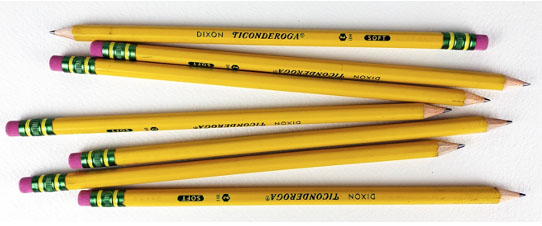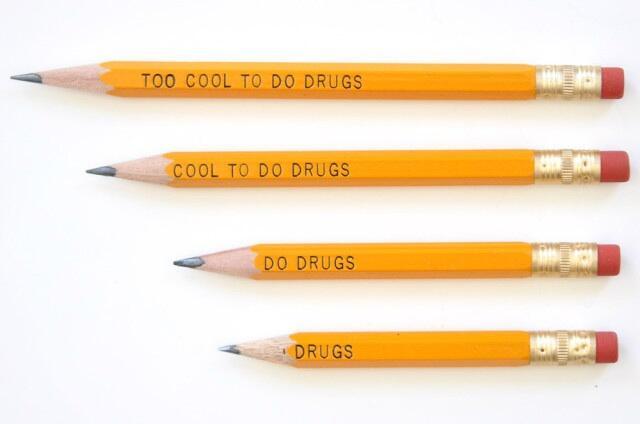The Pencil That Told Kids To Do Something They Shouldn’t
The American “War on Drugs” began informally in the early 1970s. On October 27, 1970, Congress passed the Comprehensive Drug Abuse Prevention and Control Act, and the next year, two members of the legislative body issued a report asserting that 10–15 percent of servicemen in Vietnam were heroin addicts (pdf). In response, President Richard Nixon declared in a press conference (pdf transcript) that drug abuse was “public enemy number one in the United States”—and presidents and politicians since, by and large, have followed suit.
While punishment and treatment are the hallmarks of the War on Drugs, anti-drug messaging has also been a major component, especially as it pertains to children and teens. Countless public service announcements, posters, and other media have been put toward this effort. In the late 1990s, one group tried a new method of messaging—custom imprinting slogans on the sides of the ubiquitous Number 2 pencils used throughout schools, like the generic ones seen above.
The idea seemed like an easy one: print the words “Too Cool to Do Drugs” on the pencils, turning each ten-cent writing utensil into an anti-drug nudge.
But then the kids started to use them. The pencils, that is, not drugs.
To use a Number 2 pencil, you have to sharpen it. And the more you sharpen it, the more the pencil shrinks, sometimes down to just a point attached to that little metal sleeve that holds the little pink eraser. Normally, that’s not an issue. In this case, though, it was a particularly egregious problem. The words were positioned in such a way that, as children used their pencils, the message changed. “Too Cool to Do Drugs” soon became “Cool to Do Drugs” and, not long after, simply “Do Drugs” or just “Drugs.”
The organization that sponsored the special pencils, the Bureau for At-Risk Kids, recalled them after a ten-year-old at a New York−area school noticed the problem. The bureau ended up re-issuing the pencils with the message repositioned so that it shortened when the pencil was sharpened, to read “Too Cool.” But if you really want one that’s not “Too Cool” and advocates for drug use instead, you can find them online pretty easily.
Bonus fact: The little metal sleeve that attaches the eraser to the rest of a Number 2 pencil? It has a name—it’s called a ferrule.
From the Archives: Tiny Sculptures You Can Write With: Meet the artist who carves things out of Number 2 pencil tips.


